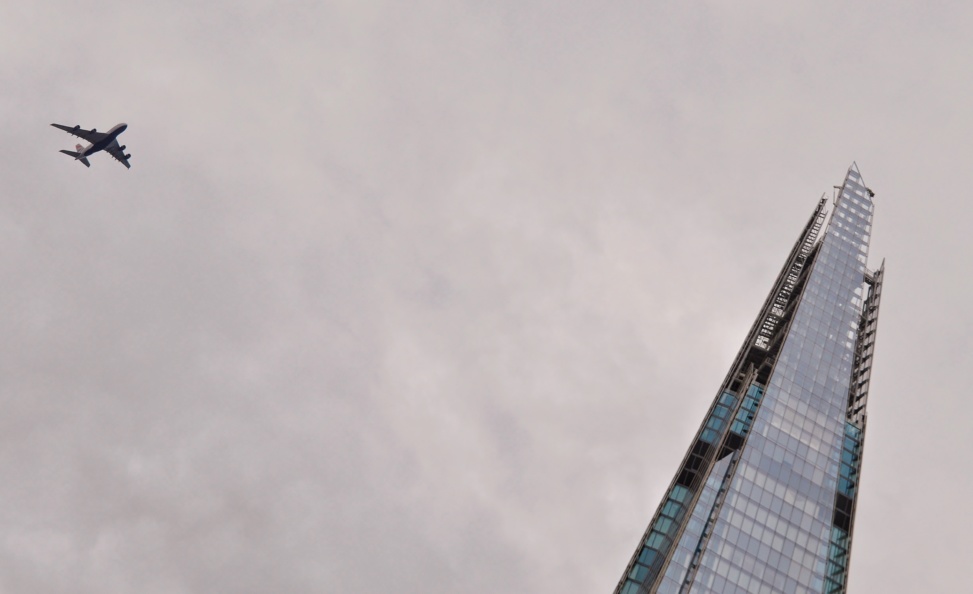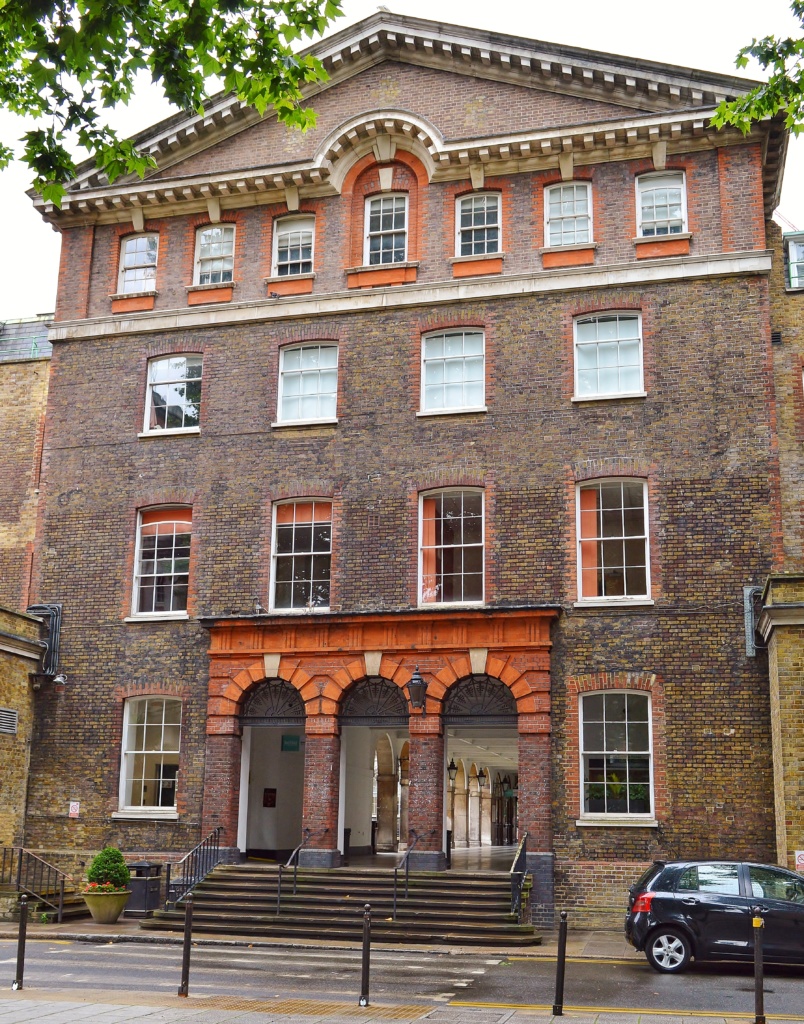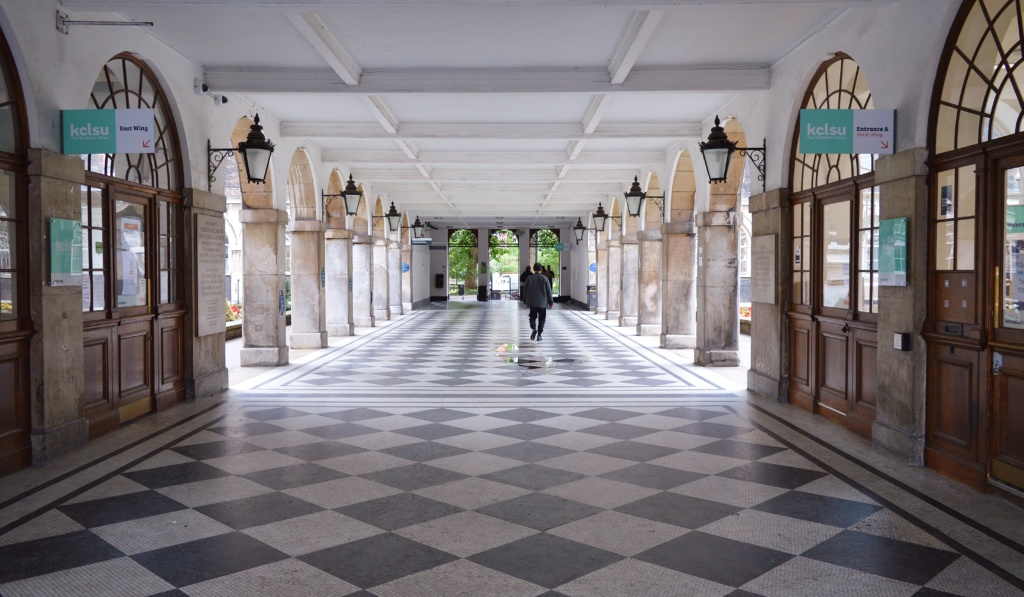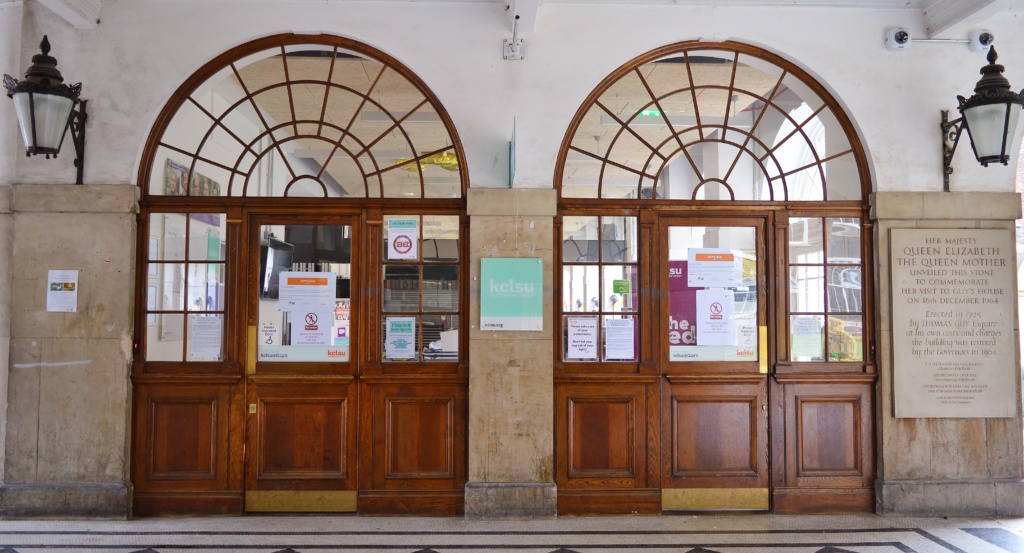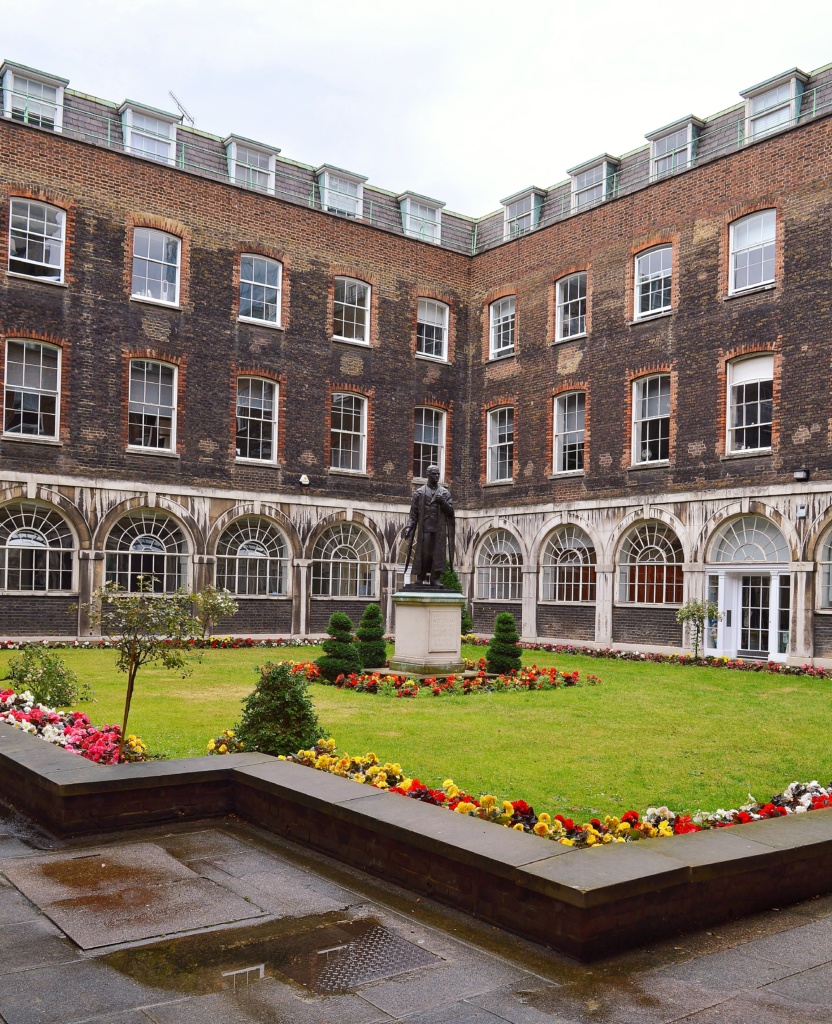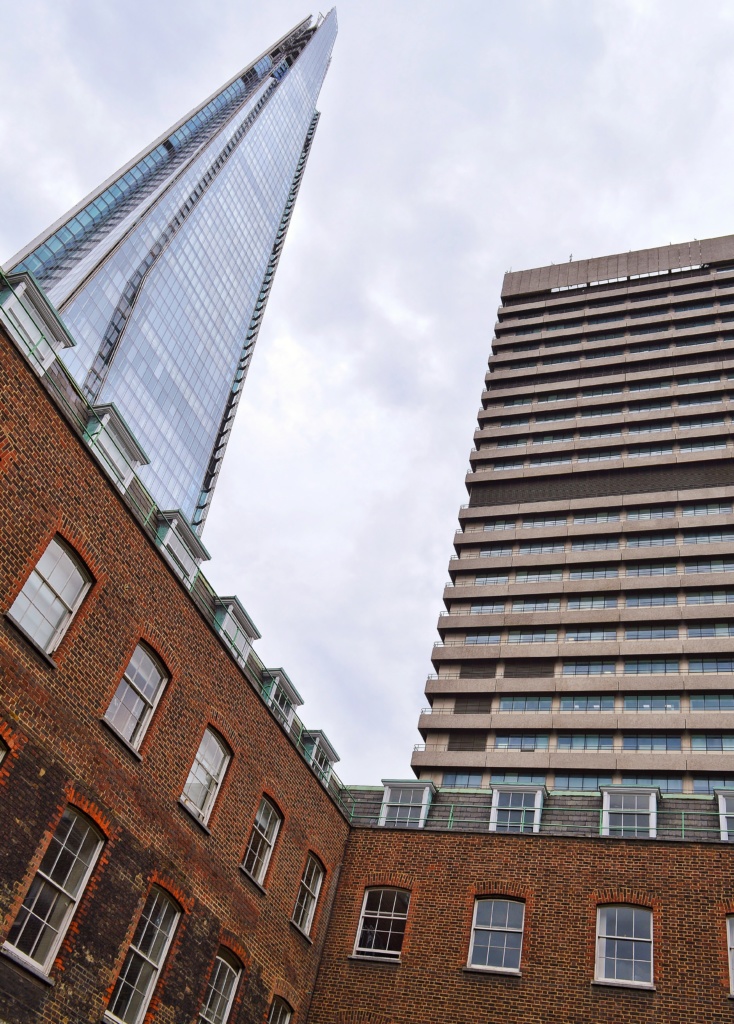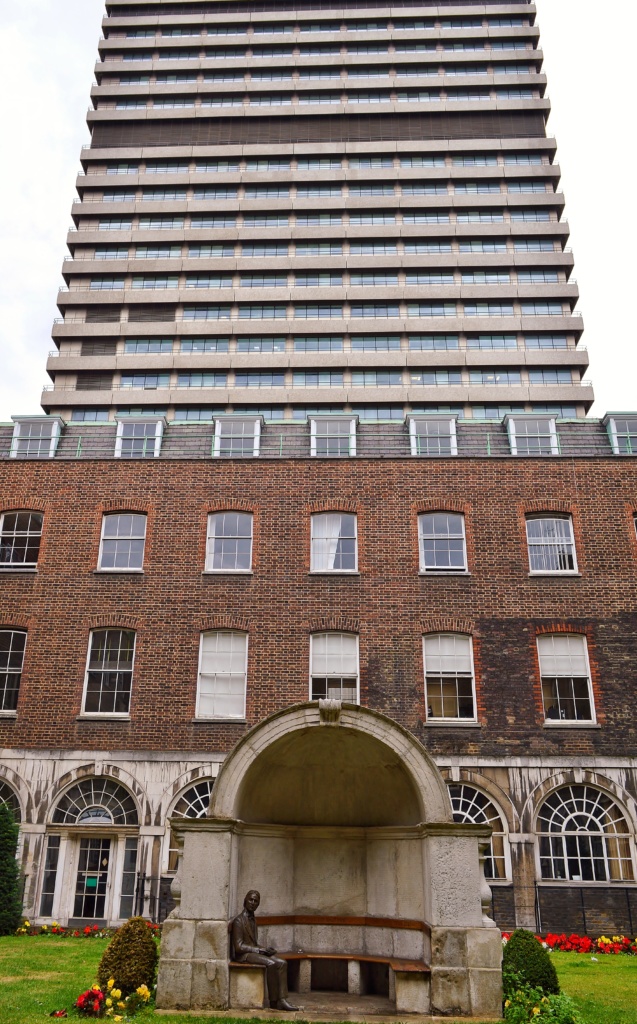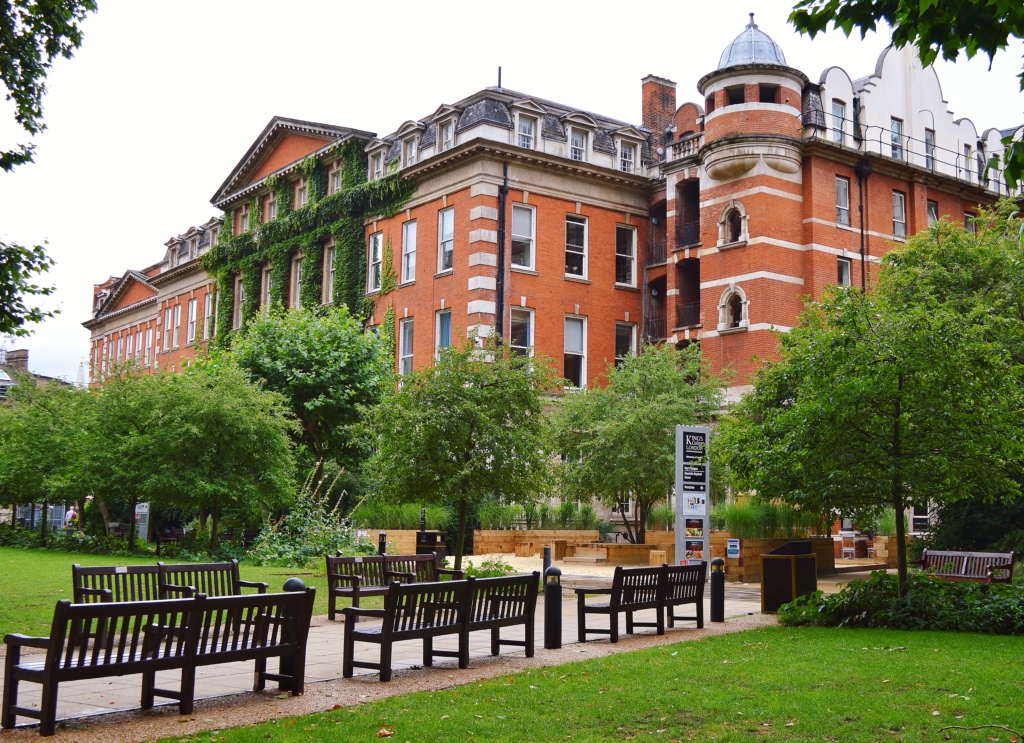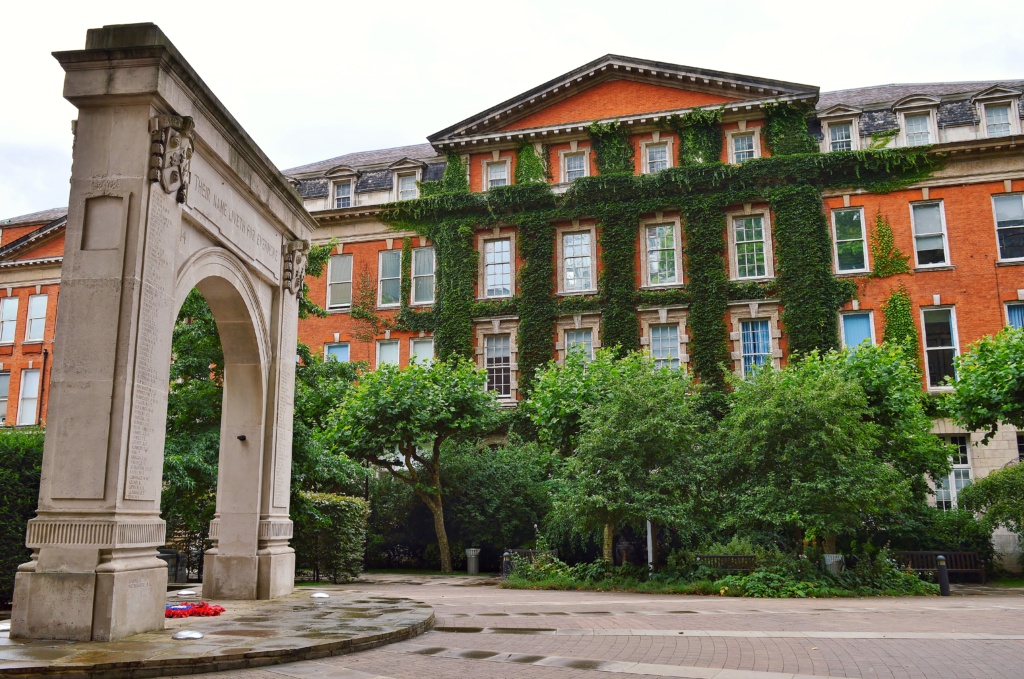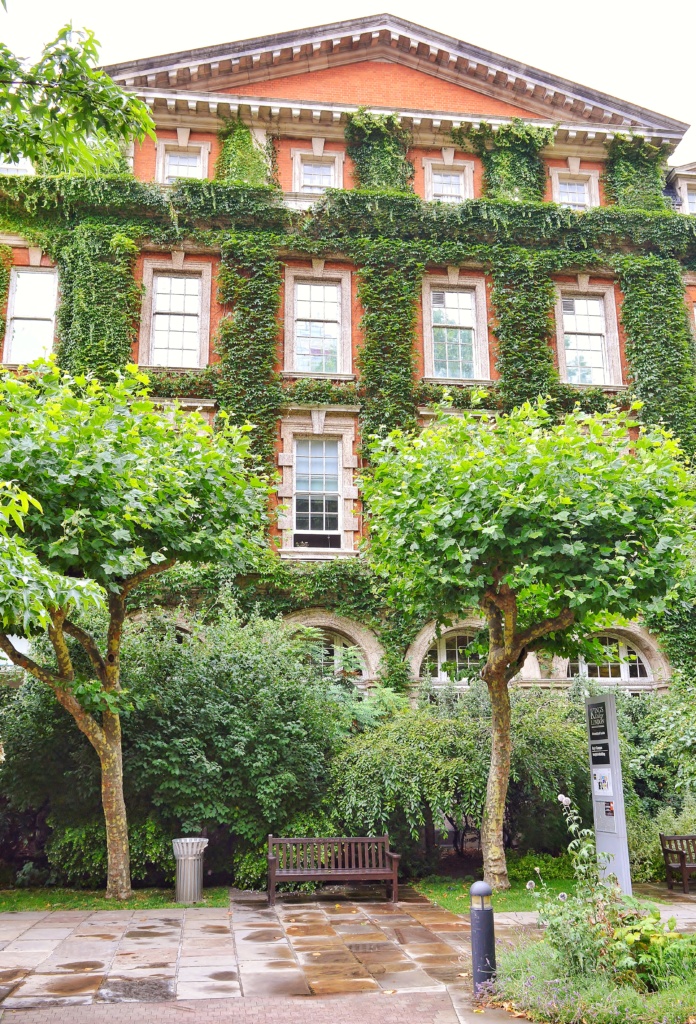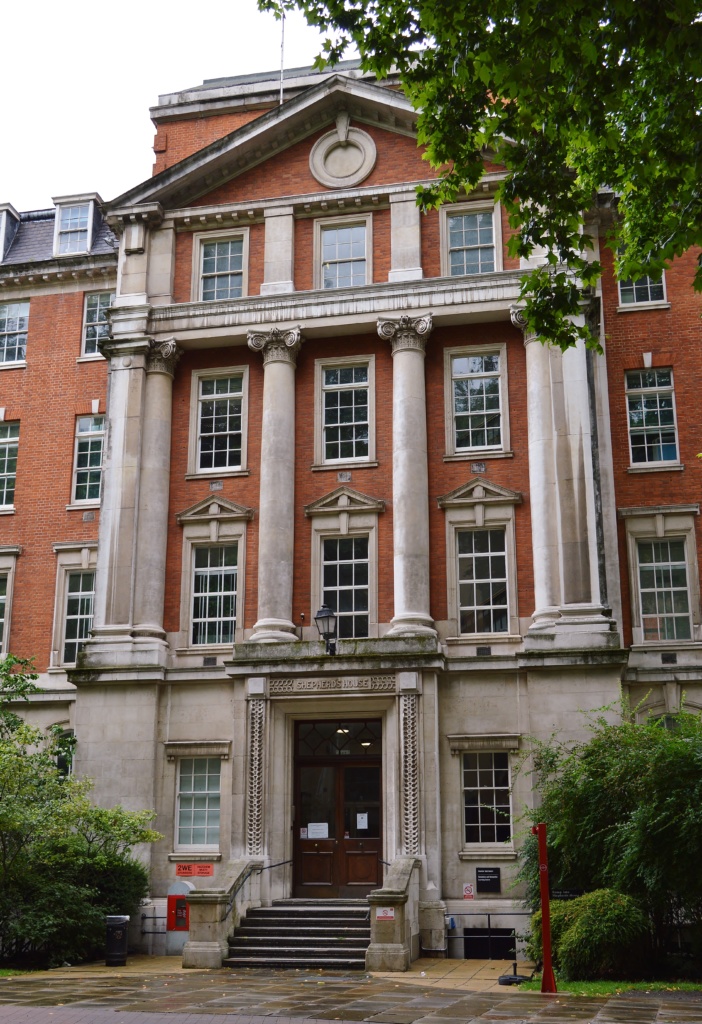It is surrounded by modern monoliths of the NHS; huge utilitarian buildings of glass and steel that may be efficient and fit for purpose but they are not easy on the eye. Hidden from the road, it is easy to walk past without ever knowing of its existence. But its well worth seeking out. For in the original heart of Guy’s Hospital, which dates back to the early 1720’s and just a stones throw from London Bridge station, there is a pleasant outdoor area, known as The Quad, and at its edges are the characterful and attractive older buildings of the hospital. Yet another of the hidden open spaces of London. This one is a place to sit and ponder, watching planes overhead draw lines in the sky as they pass the Shard that now watches over it.
Thomas Guy who founded the hospital is an interesting man. He was born in 1668, two years after the Great Fire and three after the Plague; his father made a good living from the river, owning a wharf and trading in coal. The city must have been devastated and significantly depopulated immediately after those twin tragedies but, as is often the case, opportunities come knocking when the dust settles on a disaster. Guy became a successful and not a little stingy bookseller, keeping staff wages low to maximise profits which he invested in stocks and shares with spectacular results. Cashing out before the South Sea Bubble burst, he invested in naval supplies just as Great Britain went to war with France and made himself an even bigger fortune. Its all about the timing! To belie his tightfisted reputation, Guy turned to a life of charity. He funded the building of Guy’s Hospital towards the end of his life and then when he died in 1724 he left it a further £220k (which has the purchasing power of around £500m in today’s money) towards running costs.
Guy’s Hospital has seen many major medical advances and its staff have contributed hugely to the well being of humanity over the centuries. There have been other interesting lives passing through these gardens. The philosopher Ludwig Wittgenstein turned away from academia as the Second World War raged across Europe to do something more practical and useful and got a job as a hospital porter at Guy’s, narrowly avoiding an early death when the hospital was hit by a Luftwaffe bomb.
Over one hundred years earlier, as the Napoleonic Wars wound down, John Keats, one of England’s very greatest poets, worked at the hospital. He trained as a medical student from 1815 for a year, whilst rooming in nearby St Thomas’ Street which he thought was horrible, describing it as ‘a beastly place in dirt, turnings and windings’. The area was also home to the slum district known as the “mint” which was where grave robbers would steal bodies to provide Guy’s with cadavers for the medical students, such as Keats, to examine in their lessons. The grave robbers are no more but Keats remains. There is a statue of the poet sitting in a shelter in a garden within Old Guy’s House much as he might have done between dissections, perhaps on an autumnal day, thinking of poetry or Greek urns. You can sit next to him today to eat your lunchtime sandwiches if you so wish.
